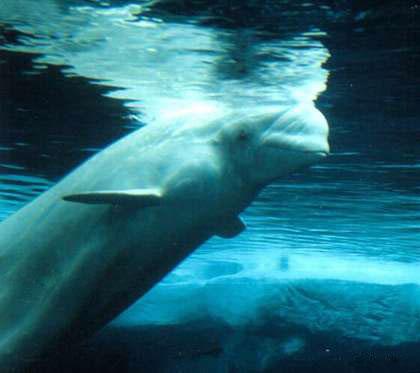
Warming temperatures are resulting in less sea ice out on the Arctic Ocean. But when it comes to if and how that change is affecting marine life — there are a lot of unanswered questions.
Researchers have published a new paper that adds a little more to what we know about how beluga whales are navigating their changing habitat. It’s based on data scientists got from tracking two groups of belugas in the Chukchi and Beaufort seas during the summer and fall between 1993 and 2012. They learned where the belugas went and how deep they dove for food.
One of the things that changed in those 20 years is sea ice: in the earlier part of that period there was more, and in the later part there was less.
Robert Suydam is one of the co-authors of the study, and a senior wildlife biologist for the North Slope Borough’s Department of Wildlife Management.
“The big results are that beluga whales like to use the same areas over, and over, and over again regardless of what the ice conditions are like,” Suydam said.
He says the researchers think what that means is — so far at least — changing ice conditions aren’t changing belugas’ ability to get the food they need.
“Which is kind of a good perspective. You know if belugas aren’t negatively impacted at least at this point… the changes in the ice maybe aren’t going to negatively impact them as much as maybe some of us… thought they might,” Suydam said.
Another big observation scientists made was that the Chukchi group of whales did start diving deeper for food in later years when there was less ice. That could mean that whales are seeing more opportunities to feed, which is keeping them underwater longer. Or that their food is deeper than it used to be.
“We don’t know what that means; we don’t know if it’s a shift in their prey,” said Suydam. “We don’t know if there’s something else that’s going on that has caused them to do this.”
Either way, it’s not necessarily a bad thing.
Suydam says that even though this data suggests that belugas aren’t being negatively impacted by the loss of sea ice now, we really don’t know what things will look like in 10, 20 or 30 years. He says scientists will need to keep a close watch so they can help inform policies on everything from development, to shipping routes, to subsistence hunting in a changing arctic.
